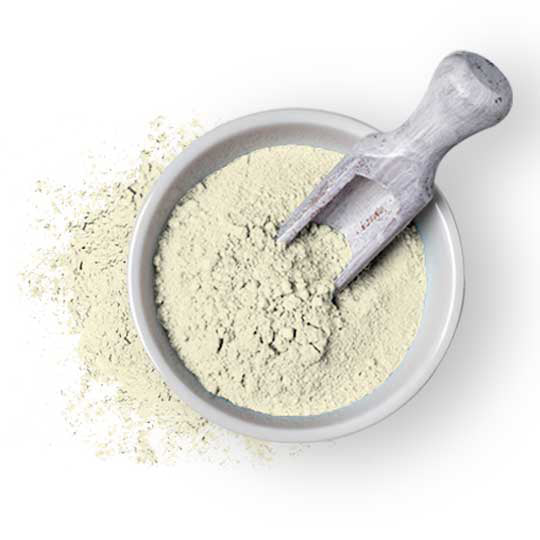How To Make Clay Soap at Home
Natural clays have been used for centuries to exfoliate and cleanse, but using them regularly can get hard. What is the solution, then? Soap is made out of natural Clay. Clay is a little-known yet highly efficient ingredient in soap. It's a natural, gentle exfoliator that also helps eliminate oils and impurities from your skin.

Additional benefit: Its silkiness makes cleaning simpler. But how does it operate, and what effect does it have on your skin? It isn't magic. Natural clays have so many advantages that it's difficult to list them all. Thus in this article, we will go over the benefits and how to make clay soap at home.
Why Use Clay In Soap?
Clay is a little-known yet highly efficient ingredient in soap. It's a natural, gentle exfoliator that also helps eliminate oils and impurities from your skin. Additional benefit: Its silkiness makes shaving simpler. You can make soap with kaolin clay or use a different kind for distinct benefits.
5 Benefits Of Homemade Clay Soap
Natural Clay offers numerous benefits for the skin, including removing pollutants, minimizing discoloration, and balancing natural oils, among others. Making it at home makes it more effective. Let's look at the Benefits of DIY Clay Soap.
1. Treats Hyperpigmented Skin
You should use bentonite clay in soap making if you have hyperpigmentation. Clays are known for their absorbent characteristics, which help remove impurities from pores, shrink them, and even out your skin tone.

Bentonite Clays' antibacterial and anti-inflammatory characteristics aid in the healing of acne and other blemishes, reducing the risk of dark stains.
2. Draws Out Impurities
Every day, we come into contact with a variety of contaminants. We sweat, put on makeup, and even pollution gets into our pores. DIY Clay Soap's wash may aid in the detoxification of your skin by sucking out microparticles from within.
Many of these natural soaps contain red Clay and bentonite clay. Pink Clay is fantastic for hydrating, while bentonite clay is great for absorbing excess oil. Clays also contribute to the velvety, silky texture of our soaps while also providing light exfoliation.
3. Reduces Excess Oil
If you have oiliness, you know how difficult it is to keep extra oil from resting on the surface all day. Thankfully, Homemade clays soap help keep brightness at bay and are an imperative step in the skin.

These Clay's Soap adsorption properties help remove excess sebum and reduce oily skin, avoiding acne breakouts, making it the ideal option for my oily-skinned clients.
4. Hydrates Your Skin
While Clay is most renowned for helping acne-prone skin, it also offers moisturizing properties if you need some extra moisture.
Adding Pink Clay While making soap will clean your skin by providing moisturization, which allows it to remove oil and filth without being too harsh on the skin.
5. Gently Exfoliates
Clays are also an excellent technique to exfoliate your skin gently. The soft, fine-grained minerals aid in the removal of dead skin cells from the surface, revealing healthy-looking skin. It's also high in magnesium and potassium, two minerals that beauty professionals worldwide recommend for increasing skin suppleness.
Variety Of Clay To Use In Soap Making
French, bentonite, Red Clay, Rose Clay, and rhassoul are some of the most common clays used in soap. Each has a distinct feature that may lead you to prefer one over the other.

1. French Green Clay
This Clay is native to France and is well-known for its oil-absorbing abilities. It has a delicate texture and is widely used in facial masks for color and oil absorption. Decomposed plant debris and iron oxides give the pale green tint. It's best for people with oily skin.
2. Bentonite Clay
The mineral-rich Bentonite Clay Powder helps to improve the texture and overall health of the skin by detoxifying and remineralizing it. This Clay is gentle enough to use on all skin types.
This Clay's powerful ingredients contain anti-aging compounds that constrict pores and reduce the appearance of wrinkles and fine lines. Bentonite clay also helps rejuvenate the skin and gives it a young look.
DIY Clay Soap Recipe - Step By Step
It's all about the ratio; you may use the same Cold press clay soap recipe with different clays. This incredible clay soap will cleanse your skin, purify it, and function as a natural exfoliant. Let's look at how you may manufacture this soap at home.

Ingredients With Quantity
- Virgin Olive Oil - 260 Ml
- Virgin Coconut Oil - 260 Ml
- Palm Oil - 260 Ml
- Castor Oil - 88 Ml
- Mango Butter - 57 Grams
- Lye - 130 Ml
- Distilled Water - 310 Ml
- Bentonite Clay - 4 Teaspoons
- Lavender Essential Oil - 30 ml
Direction to use clay soap
Get your mold ready. Freezer paper or wax paper should be used to line wood molds. Silicone molds can be used right away.
- Any box can be used if freezer paper, wax paper, or a thick waste bag is used to line it.
- Put on your safety gear and tare your scale by placing the glass jar on the scale. Fill 310 ml of pure water in a container and place it aside.
- Tare the scale by placing the second jar on it. Pour the lye into the jar slowly until the scale reads 130 ml.
- Slowly pour the lye into the water in a well-ventilated location or outside. Stir the lye, and make sure it is completely dissolved. Be careful if you need to move it because it will become hot. Allow this mixture to cool to roughly 100 degrees before using.
- While the lye cools, combine all the remaining ingredients in a pot or slow cooker, except the essential oils.
- Add Clay to the oils after removing them from the heat once completely dissolved. Mix the Clay with your stick blender until it is disseminated.
- Allow the oils to cool to roughly 35 degrees celsius. Test the temperature with the infrared thermometer every 5-10 minutes. This is effective, but a candy thermometer in each container is also effective. The lye/water and the oils should be about 35 degrees and within 10 degrees of one another. If one is cooling quicker, return the oils to the heat source or place the lye/water mixture in a warm water bath to slow down the cooling.
- Slowly pour the lye/water into the oils once the temperatures match. Make sure the blade of your stick blender is completely submerged before turning it on, or it will splatter everywhere. Bring the batter to a light trace with the stick blender.
- Essential oils can be added now, although they are optional.
- Pulse the immersion blender a few times to incorporate the essential oils. The mixture should now be at a medium trace. When you remove your blender from the mixture and observe how the drips react, you'll know you've attained a medium trace. On the surface, they should leave a trail or trace.
- Fill the mold with the soap blend you have made. Remove everything with the spatula. Remember that the soap isn't entirely cooked yet and could irritate your skin, so you should keep your protective clothing on.
Place the mold undisturbed for the next 24 hours. Over the soap, place an upside-down cardboard box and cover it with a cloth. A towel may not be required if your home is warm. Allow for 24 hours of rest. You can now cut and remove your soap. Cut the bars about 1 inch thick, yielding 10 bars weighing around 130 grams each, although you can cut them to any size you like.
Allow 4-6 weeks for bars to lie upright in a dry environment with an inch or two of space between them to allow air circulation. This will allow the saponification of the soap to be completed. During this period, the soap will lose some of its water, making the bar tougher. The longer the bar lasts, the harder it is.
Conclusion
Clay is bubbling with goodness and beneficial properties, and using it in soap making gives it the versatility, it deserves. Let's celebrate your skin's health with VedaOils' Pure collection of natural clays, which are best for soap making. Add this amazing recipe to your skincare regime. Take care.
You May Also Like:
Buy Products
-
 Bentonite Clay
Bentonite Clay -
 Brazilian Purple Clay Powder
Brazilian Purple Clay Powder -
 French Pink Clay Powder
French Pink Clay Powder -
 Rhassoul Brown Clay Powder
Rhassoul Brown Clay Powder -
 Rose Clay Powder
Rose Clay Powder
Related Articles
Disclaimer :- This article is intended for informational and educational purposes only and should not be considered a substitute for professional medical advice. For specific health concerns or treatment, please consult your personal physician. The article's editor, writer, and VedaOils organization do not assume any responsibility for any health outcomes resulting from the information provided. Readers are strongly encouraged to seek advice from their physician before acting on any recommendations made in these articles.
















 Sign in
Sign in Register now
Register now My Reward Points
My Reward Points









